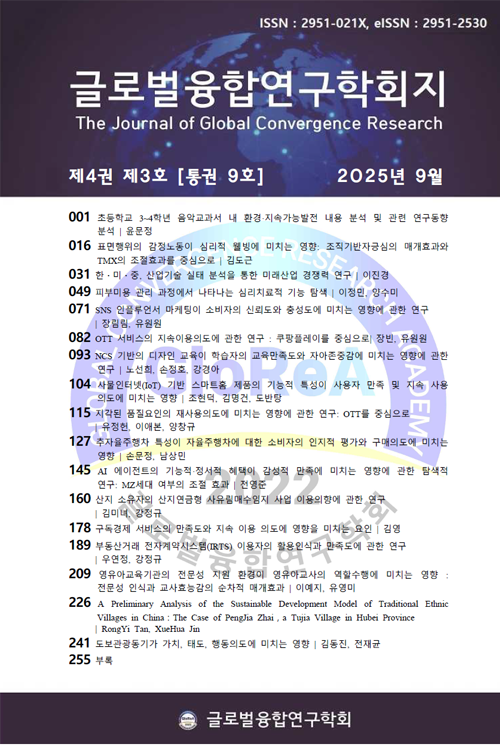- 영문명
- Exploring Psycho-therapeutic Functions through Skin Beauty Care Experiences
- 발행기관
- 글로벌융합연구학회
- 저자명
- 이정민(Jung-min Lee) 양수미(Su-mi Yang)
- 간행물 정보
- 『글로벌융합연구학회지』제4권 제3호, 49~70쪽, 전체 22쪽
- 주제분류
- 복합학 > 학제간연구
- 파일형태
- 발행일자
- 2025.09.30

국문 초록
본 연구는 피부미용 관리가 단순한 외적 관리 행위를 넘어 심리적 치유 기능을 수행할 수 있는지를 탐색하기 위해 문제중심 인터뷰를 실시하고, Colaizzi의 7단계 절차로 분석하였다. 그 결과, 피부미용 관리 경험은 감각 기반 이완과 정서 환기, 공감적 관계 형성과 심리적 지지, 외적 변화와 효능감 회복, 자기 인식과 스트레스 해소, 구조화된 안정과 심리적 안녕감의 다섯 주제로 도출되었다. 이는 피부미용 관리가 외모 개선을 넘어 정서적 안정과 웰빙을 촉진하는 잠재적 자원임을 보여준다. 또한 연구 결과는 피부미용 관리 경험이 정서중심치료(EFT)에서 강조하는 감정 인식·표현·재구성과 유사한 과정을 포함하며, 일상적·예방적 정신건강 돌봄의 대안으로 기능할 수 있음을 확인하였다. 본 연구는 피부미용 관리가 미용학의 학문적 지평을 확장할 뿐 아니라, 향후 ‘미용심리치료사’ 제도화와 같은 융합 직무 개발의 근거 자료가 될 수 있음을 시사한다.
영문 초록
This study explored whether skin beauty care can function not only as an external aesthetic practice but also as a psychotherapeutic resource. A qualitative design was employed using problem-centered interviews with ten adults who had received regular skin beauty care for more than six months. Data were analyzed using Colaizzi’s seven-step phenomenological method. Five themes emerged: sensory-based relaxation and emotional ventilation, empathic relationships and psychological support, external transformation and recovery of self-efficacy, self-awareness and stress reduction, and structured stability and psychological well-being. These findings indicate that skin beauty care extends beyond cosmetic enhancement, fostering emotional stability and contributing to well-being. Participant experiences also showed parallels with Emotion-Focused Therapy (EFT), particularly in emotional awareness, expression, and reorganization. This suggests that skin beauty care, even in non-medical and everyday contexts, may activate therapeutic mechanisms that support emotional healing. The significance of this study lies in providing empirical evidence that skin beauty care can operate as a preventive and supportive mental health resource. Beyond aesthetic outcomes, it highlights the potential for developing integrative professions such as the “beauty psychotherapist,” thereby expanding the academic scope of beauty studies and contributing to interdisciplinary practice.
목차
1. 서론
2. 이론적 배경
3. 연구설계
4. 결과 및 논의
5. 결론
References
키워드
해당간행물 수록 논문
참고문헌
최근 이용한 논문
교보eBook 첫 방문을 환영 합니다!

신규가입 혜택 지급이 완료 되었습니다.
바로 사용 가능한 교보e캐시 1,000원 (유효기간 7일)
지금 바로 교보eBook의 다양한 콘텐츠를 이용해 보세요!


